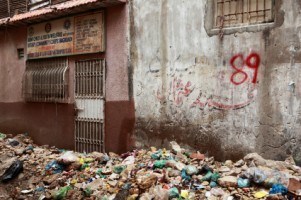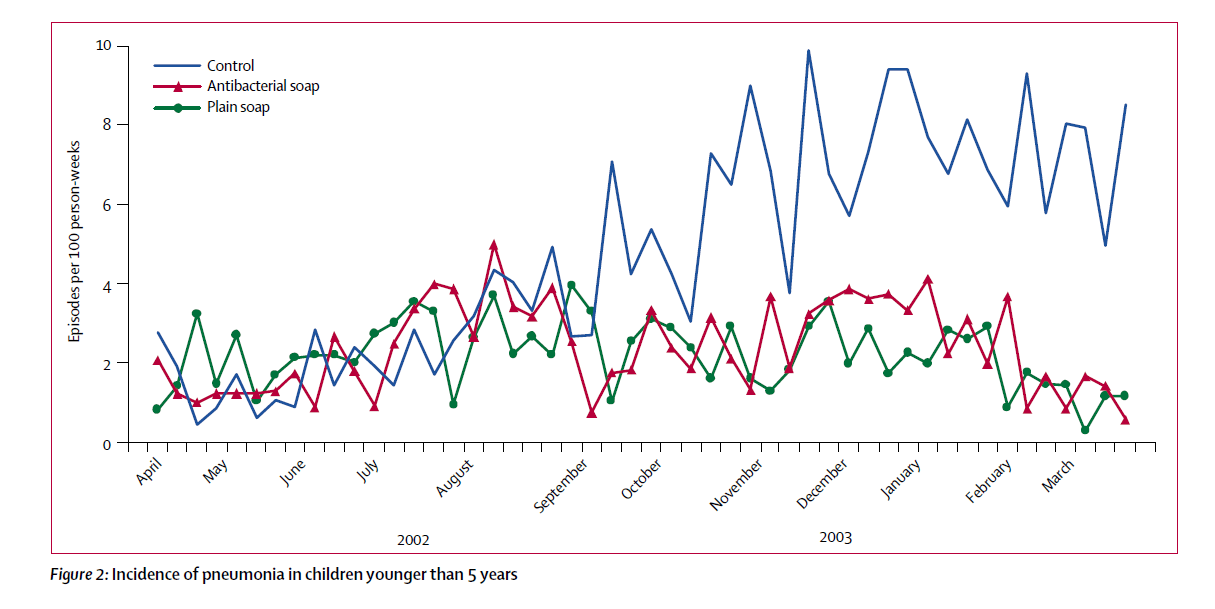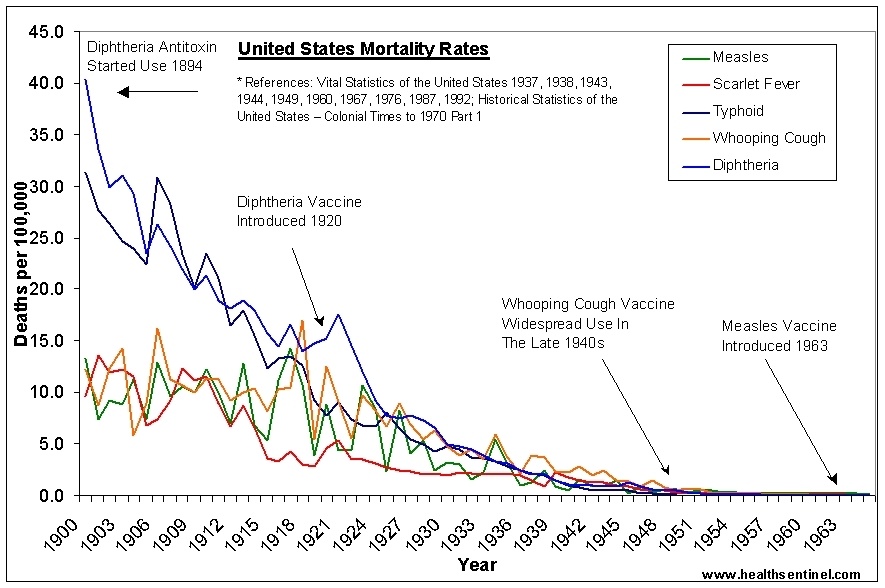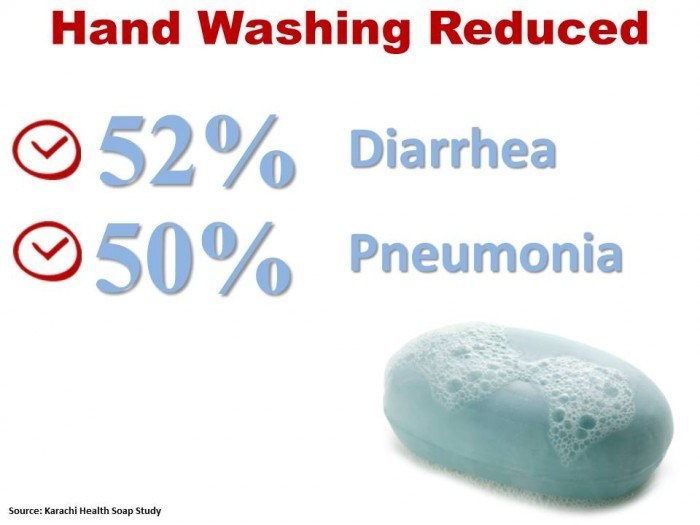
It’s not black magic or some out-of-date belief—just good old-fashioned common sense.
Better hygiene, sanitation, and organic food are the foundations for good health. But to what degree could one of those elements (hygiene, for example) have an effect on decreasing a disease? I think finding the answer to this question and considering the evidence is valuable for parents who are considering vaccinating their children.
Why?
Mainstream health officials at the Centers for Disease Control and other such agencies in the United States use emotionally charged language to declare that vaccines—not better sanitation or hygiene— saved the world from deadly diseases.
It is for this reason that I must warn you: Those who push vaccines often trivialize or underestimate the information I am going to share with you. It completely destroys what they have been told for many years.
If you’re interested in learning more, read on.
The Gold Standard
The big secret vaccine peddlers avoid like the plague is, one amazingly simple act reduced two diseases by 50% or more. The most vital point to remember: The decrease in morbidity of—or the rate of incidence of a disease—those affected by the diseases had nothing to do with vaccines!
To get our answer, we turn to Karachi, Pakistan.
In 2002, a randomized controlled trial (a gold standard of scientific research) was performed by Dr. Stephen P. Luby in Karachi, Pakistan. The goal of the study was to assess the impact of hand washing and bathing with soap in settings where infectious diseases are leading causes of childhood disease and death. [1–3]
It is known as the Karachi Health Soap Study.
It’s noteworthy to keep in mind that the variable studied was hand washing—not improved sanitation (waste water treatment), clean drinking water, better food or storage, or even vaccines. In Karachi, sewage contaminates the drinking water and feces contaminates the environment. This is what makes the study so radically powerful!
If you want to see an overview of what was done, read on.
[adrotate banner=”10″]
The Power of Simplicity and Education
Here are the some relevant facts you should know about the Karachi Health Soap Study[3]:
- 25 neighborhoods were either given an antibacterial soap (containing 1.2% triclocarban) or plain soap.
- 11 neighborhoods were the control. In other words, no hygiene promotion occurred, and no soap was dispensed in these neighborhoods.
- Both the antibacterial soap and plain soap looked and smelled identical.
- Both types of soap were packaged identically in generic white wrappers. Neither the fieldworkers nor the families knew whether the soaps were antibacterial or plain.
- Fieldworkers reviewed with the families the health problems that resulted from contaminated hands and provided them with specific hand-washing instructions.
- Fieldworkers encouraged households to wash their hands after defecation, after cleaning an infant who had defecated, before preparing food, before eating, and before feeding infants.
- Fieldworkers encouraged participants to bathe once a day with soap and water.
Here’s what happened next…
Dramatic Decrease in Diseases
Remember my warning in the beginning of the article about the information being dismissed? As you will see, the results are very dramatic.
As noted by the study, in the first 6 months not much change or variation (only 6%) was noted between the different groups. In the graph below, the biggest change came in the second half of the year.

Source: Karachi Health Soap Study [3]
The results of the study were analyzed after 51 weeks.
- Primary diarrhea outcomes in children younger than 15 years by intervention group
- Antibacterial soap: 47% fewer incidences of diarrhea than control group
- Plain soap: 52% fewer incidences of diarrhea than control group
- Primary respiratory outcomes in children younger than 15 years by intervention group
- Antibacterial soap: 45% fewer incidences of pneumonia than control group
- Plain soap: 50% fewer incidences of pneumonia than control group
It is essential to reemphasize, the World Health Organization lists pneumonia (lower-respiratory infection) and diarrhea as the number 1 and number 2 diseases, which kill more than 3.5 million children worldwide each year. [3–5]
This seems to be in harmony with the principle that Antoine Bechamp—and even Weston Price—wrote about many years ago: The health of the host is everything. The disease is nothing. [6]
Considering that the people in the Karachi study drank the same water, ate the same foods, had the same indoor plumbing (or lack thereof), etc., a significant question has to be asked. If simple hand washing can decrease the morbidity of diarrhea and pneumonia by 50% or more, what happens when better sanitation facilities, food storage, and quality of food are introduced?
Even more important, I’d think there would be comparative data on the effectiveness of hand washing and vaccines. But if that were to happen—given the safety track record of soap versus vaccines—the entire vaccine program would receive a severe death blow.
What we know is when the standard of living increases, mortality and morbidity rates fall.
As an example, mortality rates (not morbidity) in the United States decreased prior to the introduction of vaccines (notice there was not a vaccine for scarlet fever).

What could cause such an intense drop in mortality rates? It obviously wasn’t the vaccines. If vaccines caused a 50% drop in morbidity or mortality rate of a disease within a 6-month period, the media would broadcast it all over the news, singing the praises and benefits of getting injected.
The irony of this study is that the Centers for Disease Control provided some funding and reviewed the data. Here’s an excerpt from the study:
The balance of the funding was provided by the Centers for Disease Control and Prevention. Inclusion of soap trade names is for identification only and does not imply endorsement by CDC or the Department of Health and Human Services. These data were presented in part at the International Conference on Emerging Infectious Diseases, Atlanta, GA, USA, in February, 2004. [3]
So, now you know that some people at the Centers for Disease Control know. But here’s the clincher.
Vaccine Pushers
The Centers for Disease Control recommend the following vaccines in the United States to prevent the very same diseases discussed above.
For diarrhea: RotaTeq® (RV5) and Rotarix® (RV1). [7]
For pneumonia: Pneumococcal, haemophilus influenzae type b (Hib), pertussis (whooping cough), varicella (chickenpox), measles, and influenza (flu) vaccine. [8]
Does the Centers for Disease Control mention washing hands as a means of prevention? Sure—in passing.
They say something to the effect that good hygiene is important, but is not enough to control the spread of the disease. They recommend vaccines.
 Then again, you might want to consider why the CDC is so adamant about recommending vaccines. For example, this is from an article on Mercola.com:
Then again, you might want to consider why the CDC is so adamant about recommending vaccines. For example, this is from an article on Mercola.com:
Dr. Paul Offit of the Children’s Hospital of Philadelphia earned millions of dollars as part of a $182-million sale by the hospital of its worldwide royalty interest in the Merck Rotateq vaccine … The high price placed on the patents raises concerns over Offit’s use of his former position on the CDC’s Advisory Committee on Immunization Practices (ACIP) to help create the market for rotavirus vaccine— effectively, to vote himself rich. [9]
Could the deep ties to the pharmaceutical companies be the reason the CDC puts more emphasis on vaccines? Considering the evidence presented in the Karachi Health Soap Study, which would you choose—better hygiene or a vaccine?
Conclusion
What’s the moral of the story?
The data revealed by Stephen P. Luby in the Karachi Health Soap Study is nothing short of spectacular. Children who washed their hands and skin with plain soap had 52% less diarrhea and 50% less pneumonia. Good hygiene has a significant impact on decreasing disease, and I think it is something we take for granted in the United States.
Please remember this point: If better nutrition and sanitation were added as components of this or a future study, I suspect that Karachi, Pakistan, would see a more dramatic drop in diseases, much like in the United States—and I would highly encourage such efforts.
Just imagine the implications of a comparative study being performed between hygiene practices and vaccines for decreasing disease. What do you think the outcome would be? My money would be on hygiene practices being the clear winner.
Here’s the shocking reality.
You hold in your hands the real power and master key to good health. It doesn’t come through the tip of a needle.
References
- http://en.wikipedia.org/wiki/Randomized_controlled_trial
- http://en.wikipedia.org/wiki/Levels_of_evidence
- Luby, Stephen P., Mubina Agboatwalla, Daniel R. Feikin, John Painter, Ward Billhimer, Arshad Altaf, and Robert M. Hoekstra.“Effect of Handwashing on Child Health: A Randomised Controlled Trial.” The Lancet 366, no. 9481 (July 16, 2005): 225–233. doi:10.1016/S0140-6736(05)66912-7. http://www.ncbi.nlm.nih.gov/pubmed/16023513
- WHO Pneumonia Fact Sheet: http://www.who.int/mediacentre/factsheets/fs331/en/
- WHO Diarrhoeal Fact Sheet: http://www.who.int/mediacentre/factsheets/fs330/en/
- http://www.naturalnews.com/030384_Louis_Pasteur_disease.html
- http://www.cdc.gov/rotavirus/about/prevention.html
- http://www.cdc.gov/Features/Pneumonia/
- http://articles.mercola.com/sites/articles/archive/2009/06/25/vaccine-doctor-given-at-least-30-million-dollars-to-push-vaccines.aspx
We are publishing this information to educate Congress, the media, and the public regarding issues affecting the health and well-being of our citizens. It is not our intention to infringe upon anyone’s copyright. We believe we have used the U.S. Copyright’s Doctrine of Fair Use equitably and without incurring infringement or plagiarism.
